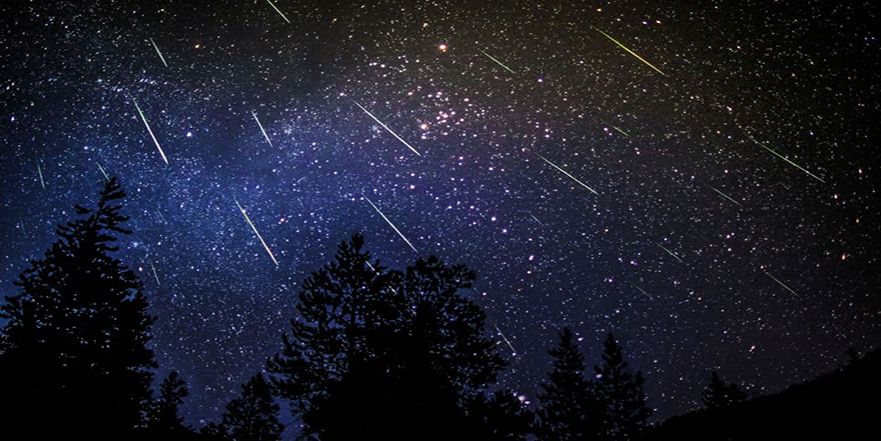Shooting Star Rain: Perseid is coming
Meteor shower reaches its peak at 12th August
It's raining shooting stars: On 12th August, the meteor-shooter of the Perseid reaches its annual climax - one of the most spectacular shooting stars of the year. In the night from Saturday to Sunday, up to 100 shooting stars can drop per hour. It is best to see them in the first night before the bright moon rises at 23:00, because it will flood many weaker meteors.

Summertime is shooting time. One of the reasons for this is the Perseids, one of the most spectacular meteor showers of the year. Every year in mid-August, the earth travels around the sun through a dust cloud that the comet Swift-Tuttle has left behind. Then, when the small dust particles run through the upper atmosphere at around 60 kilometers per second, they produce a brightly lit trail of overheated gases - it is raining meteors.
Only partially outshined by the moon
This year, the maximum of the Perseid-Shower lies in the night from the 12th to the 13th of August - for observers very well at the weekend. However, there is a disadvantage this time: on 7th August was full moon and the moon is still 80 percent enlightened on weekends. From its rise at around 11:00 pm, the moon will be able to flood a large part of the shooting stars. Before this, however, numerous shooting stars should be seen. Up to a hundred shooting stars per hour can fall this year with the Perseid-Shower. One more thing: no other meteor-chaser produces as many fireballs as Perseid. These larger chunks may appear as bright in the sky as Jupiter and Venus. They are therefore still recognizable despite moonlight. They often leave long strips that shine for one or two seconds.
The naked eye is enough
In order to observe the shooting stars, one does not need binoculars that reach the naked eye. It is best to find a dark place where you can see the sky well. It is a good idea, for example, to be wrapped in a blanket, simply to lie on a deck chair in the garden or a park.
Relax and allow your eyes to adjust to the darkness.
Advises Alan Mac Robert from Astronomy magazine Sky & Telescope.
Even with the moonlight you can probably see a shooting star every minute or two.
Wherever you look in the sky is no preference. For the Perseid were given their name, because they seem to emanate from the constellation Perseus, but they can be visible in the entire sky.
Live on the Internet
If the weather does not play, you can even follow the meteor at home. The Virtual Telescope project is broadcasting live footage of an all-sky camera over the Internet.
Who sits on Saturday under clouds or does not come on the weekend, has in the following days still a chance on shooting stars. The maximum of the meteor current is relatively broad. This makes it possible to observe shooting stars even a few days after the Perseid peak, when the moon is already much later and is not so big.

Good post, thanks for sharing!
There are so much nice things happening out there right :-D
Beautiful. I'm heading out tomorrow so I can hopefully spot them, but summer is a really crappy time for meteor showers in the UK, we get much better visibility on clear winter nights.
Hey there, I hope you will manage to get a sight. Otherwise you could just follow the live stream I mentioned in my post. Cheers!
wow i definitly am gonna sit tomorrow night in the garden to witness this spectacular sight, however for which country is this? all over the world?
Hey there, I think it should be world related, as the earth needs a whole day to turn around and this event should last for 2 days. Good luck and have a chilly sight!
This post has received a 2.41 % upvote from @booster thanks to: @n3bul4.
@n3bul4 got you a $2.01 @minnowbooster upgoat, nice! (Image: pixabay.com)
Want a boost? Click here to read more!